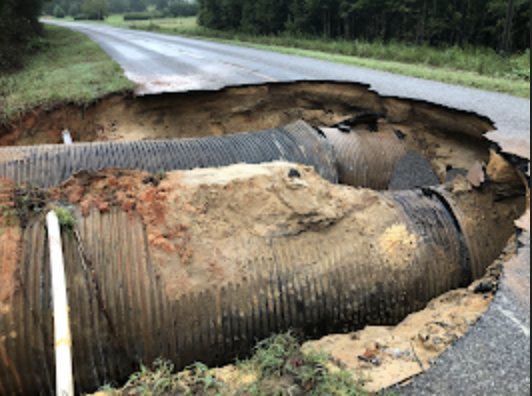Farmers get help from drought conditions
Published 12:00 am Saturday, June 24, 2000
Ralph Ricks, manager
of Quality Co-op, unloads a bail of hay from the truck used to haul it from north Alabama. Five large trucks with 115 bails of hay were available for area cattlemen to receive assistance by picking up the bails on Friday.
Photo by Alicia Weldon
If it were not for America's farmers, this country would not be as prosperous as it is today. But, in Butler County some of these farmers, especially a few of those raising cattle, are in a difficult position and are receiving help.
The Alabama Department of Agriculture and Industry, in association with the Butler County Extension Office, are helping area cattlemen who ask for assistance by providing them with hay to feed their stock.
Because of the low rainfall amounts since July 1999, some cattle have had no grass for grazing this summer. As a result, cattle farmers are feeding their stock hay from their winter supply.
Rusty Parrish, director of the Butler County Extension Office, said feeding hay so early to the cows has its repercussions.
"One of the problems with feeding cows hay from the winter stock is that when that runs out, there is nothing left. We have people who are out of grass and hay with nothing left to feed their animals," Parrish said.
Parrish said the extension office has had as many as 16 people from Butler County and the surrounding areas who have called in, one with as many as 400 heads of cattle and another with only seven heads.
"We hope we can at least get enough hay to the farmers until we get enough rainfall," Parrish said.
The hay is being bought by the Alabama Department of Agriculture and Industry from other farmers in Alabama and the South who have not experienced such extreme drought conditions as this part of the state.
The Alabama Farmers Federation is also trying the help farmers in drought-stricken areas by using the Internet. Farmers who have hay to share or sell can post this information free on a special section of the Alabama Farmers Federation website at www.alfafarmers.org. Farmers who do have Internet access can call the Federation at 1-800-392-5705, ext. 4328.
"We owe our prosperity in this country to our farmers," Parrish said. "But, it's definitely a tough business."
Walter Autrey, a local cattleman, said he is extremely pleased to be receiving this free aid.
"We sure need some of this hay," Autrey said. "We're still feeding hay, and it looks like there won't be any rain anytime soon."
The lower than normal rainfall patterns, affecting Butler County and the Southeast since last July, can be partially attributed to a warmer, drier winter in 1999 and a dry spring this year.
Cattle farmers are not the only ones affected by the drought. Peanut and cotton farmers have delayed planting, and some have not planted at all and will not until a substantial amount of rainfall falls on Butler County.
Mike Morris, cooperative weather observer for the National Weather Service, said the county normally should have received 29.42 inches of rainfall since January 1. However, the county has only received about 14.74 inches of rainfall from January 1 through June 20, making the area 14.68 inches behind in precipitation for the year.
For June, Butler County on average has received 4.5 inches of rainfall. So far, the county has only seen about 1.5 inches of rainfall for this month, placing the land far behind in total recorded rainfall.


